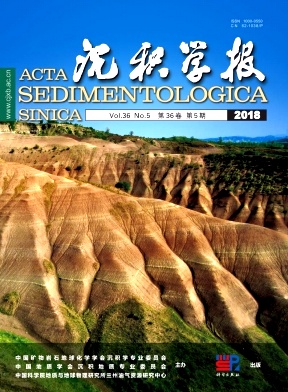Application of Seismic Sedimentology to the Prediction of Middle-Deep Sand Body in Coal-Bearing Isochronous Stratigraphic Framework
doi: 10.14027/j.issn.1000-0550.2018.072
- Received Date: 2017-08-07
- Rev Recd Date: 2017-11-07
- Publish Date: 2018-10-10
-
Key words:
- seismic sedimentology /
- coal-bearing strata /
- middle-deep sand body /
- quantitative anatomy /
- Pinghu Formation /
- Xihu sag
Abstract: Pinghu Formation of the Xihu sag developed sea-land transition sedimentary systems with the characteristic of thin interbedding among sand, clay and coal layers. The accumulation conditions of narrow thin sand body are superior, which gradually become the hotspot of rolling exploration and development. To determine the genetic type of narrow thin sand body, plane size, evolution rules and main control factors, the indication function of stable coal seam to high frequency sequence formation was fully used to set up their constructions based on the analysis of core, logging and seismic data, and the sedimentary characteristics were studied intensively by using seismic sedimentology strata slice technology. Firstly, a high frequency sequence framework of coal-bearing strata was established, and the one and second segment of Pinghu formation was divided into two third-order sequences and seven fourth-order sequences. Secondly, three kinds of narrow thin sandstone geneses were identified as distributary channel, flood fan and tidal channel. The width of distributary channel was from 500 m to 1 000 m, the plane size of flood fan was from 1 km2 to 10 km2, both of which were developed in regressive sequence, however, the tidal channel width was only from 80 m to 360 m, and developed much more in transgressive sequence. Finally, the vertical evolution and main controlling factors of narrow thin sand body were discussed and pointed out that the distributary channel and its associated flood fan sand body had good accumulation coupling relationship in the regressive sequence, which should be the main direction of subtle reservoir exploration.
| Citation: | LIU YingHui, HUANG DaoWu, DUAN DongPing, CHEN Bo, DING Fang, CHEN Chen, LI Qi. Application of Seismic Sedimentology to the Prediction of Middle-Deep Sand Body in Coal-Bearing Isochronous Stratigraphic Framework[J]. Acta Sedimentologica Sinica, 2018, 36(5): 957-968. doi: 10.14027/j.issn.1000-0550.2018.072 |






 DownLoad:
DownLoad: